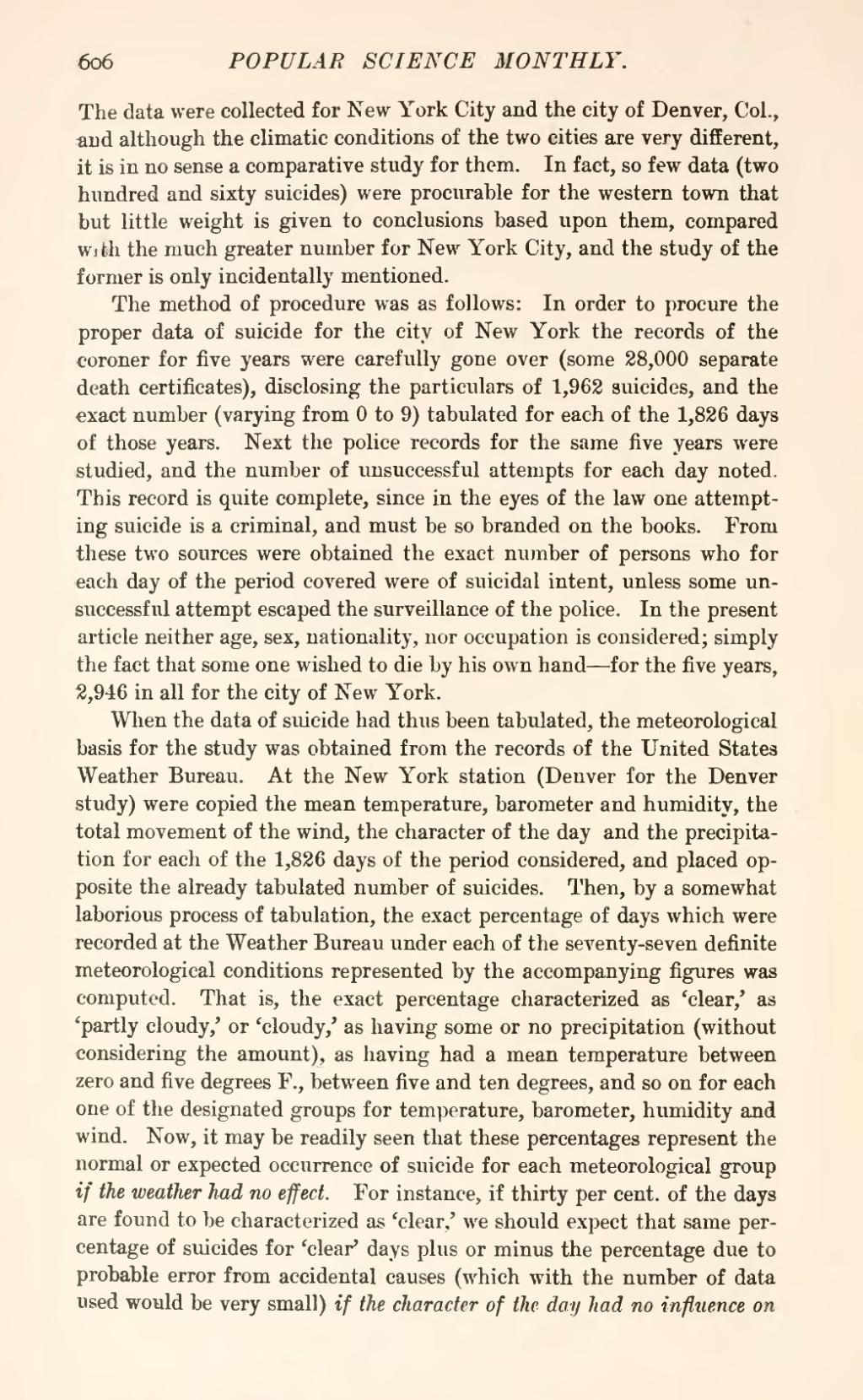The data were collected for New York City and the city of Denver, Col., and although the climatic conditions of the two cities are very different, it is in no sense a comparative study for them. In fact, so few data (two hundred and sixty suicides) were procurable for the western town that but little weight is given to conclusions based upon them, compared with the much greater number for New York City, and the study of the former is only incidentally mentioned.
The method of procedure was as follows: In order to procure the proper data of suicide for the city of New York the records of the coroner for five years were carefully gone over (some 28,000 separate death certificates), disclosing the particulars of 1,962 suicides, and the exact number (varying from to 9) tabulated for each of the 1,826 days of those years. Next the police records for the same five years were studied, and the number of unsuccessful attempts for each day noted. This record is quite complete, since in the eyes of the law one attempting suicide is a criminal, and must be so branded on the books. From these two sources were obtained the exact number of persons who for each day of the period covered were of suicidal intent, unless some unsuccessful attempt escaped the surveillance of the police. In the present article neither age, sex, nationality, nor occupation is considered; simply the fact that some one wished to die by his own hand—for the five years, 2,946 in all for the city of New York.
When the data of suicide had thus been tabulated, the meteorological basis for the study was obtained from the records of the United States Weather Bureau. At the New York station (Denver for the Denver study) were copied the mean temperature, barometer and humidity, the total movement of the wind, the character of the day and the precipitation for each of the 1,826 days of the period considered, and placed opposite the already tabulated number of suicides. Then, by a somewhat laborious process of tabulation, the exact percentage of days which were recorded at the Weather Bureau under each of the seventy-seven definite meteorological conditions represented by the accompanying figures was computed. That is, the exact percentage characterized as 'clear,' as 'partly cloudy,' or 'cloudy,' as having some or no precipitation (without considering the amount), as having had a mean temperature between zero and five degrees F., between five and ten degrees, and so on for each one of the designated groups for temperature, barometer, humidity and wind. Now, it may be readily seen that these percentages represent the normal or expected occurrence of suicide for each meteorological group if the weather had no effect. For instance, if thirty per cent, of the days are found to be characterized as 'clear,' we should expect that same percentage of suicides for 'clear' days plus or minus the percentage due to probable error from accidental causes (which with the number of data used would be very small) if the character of the day had no influence on
